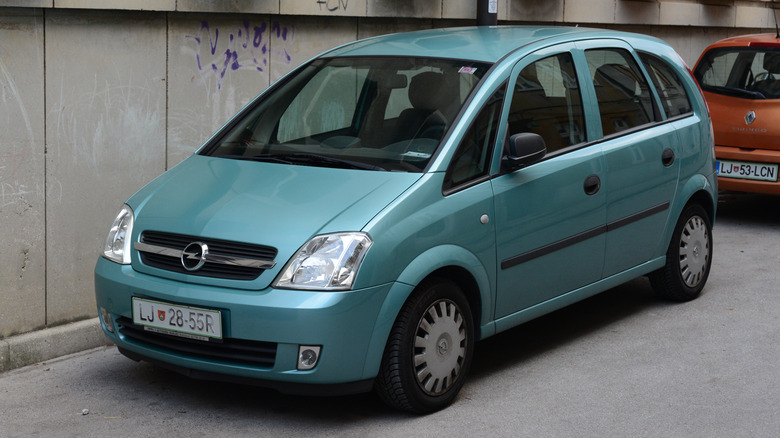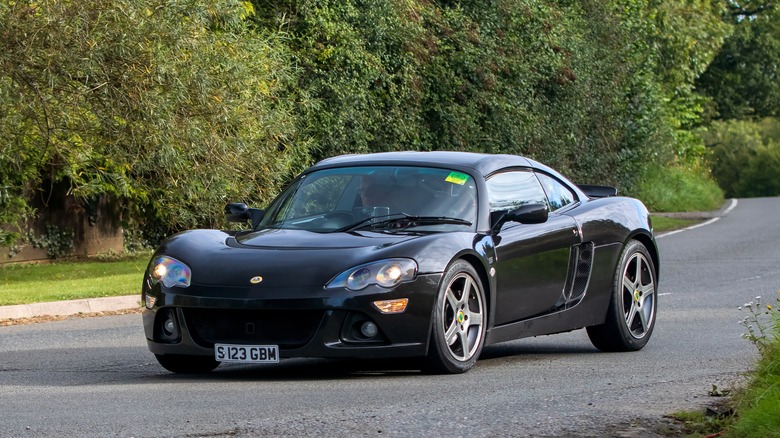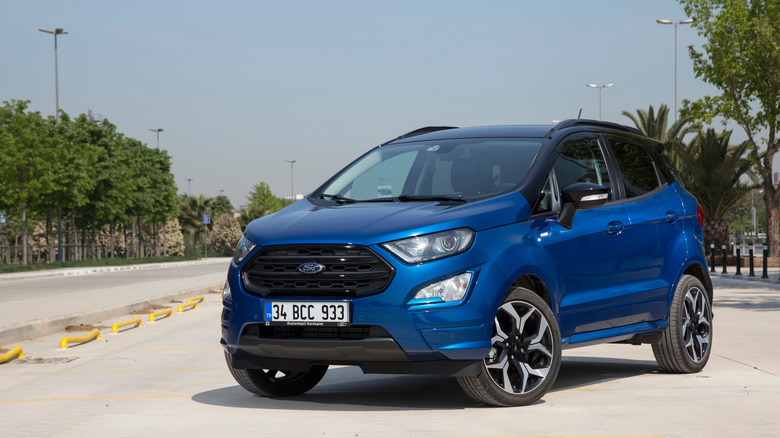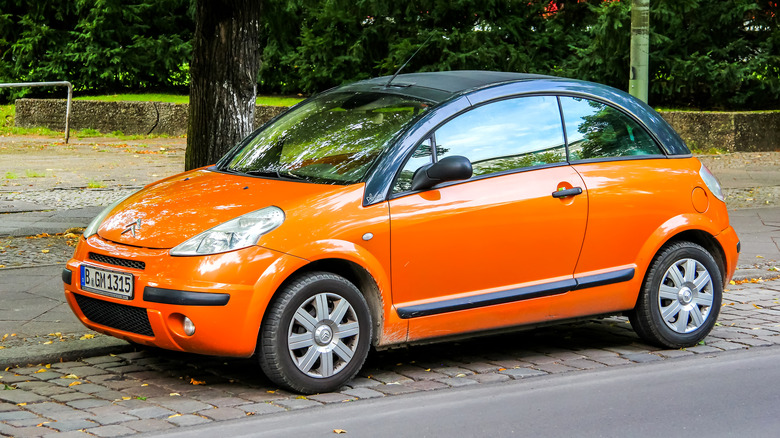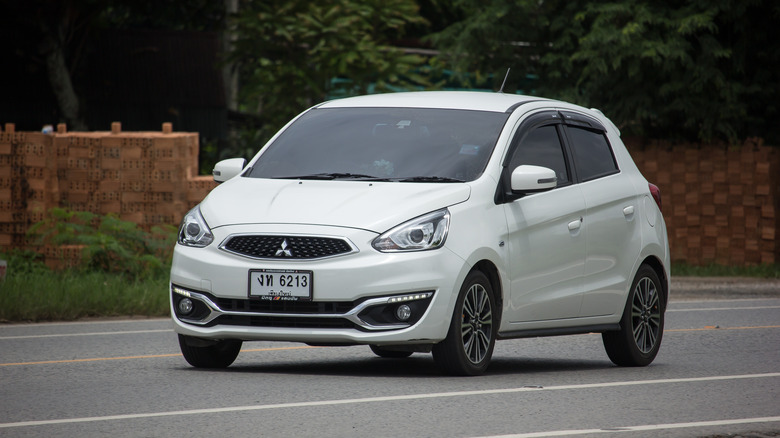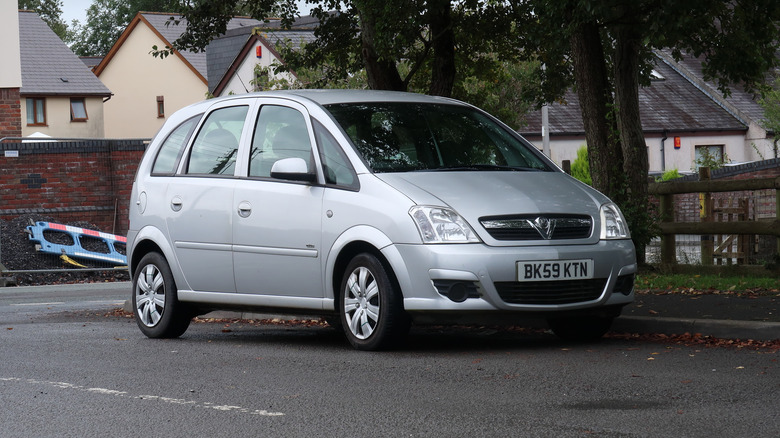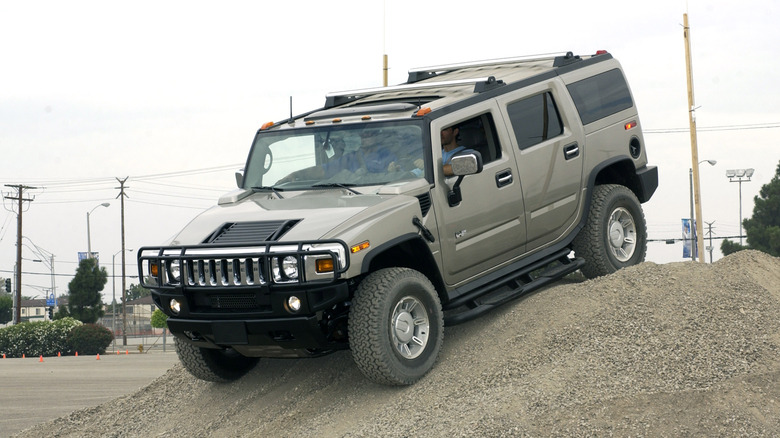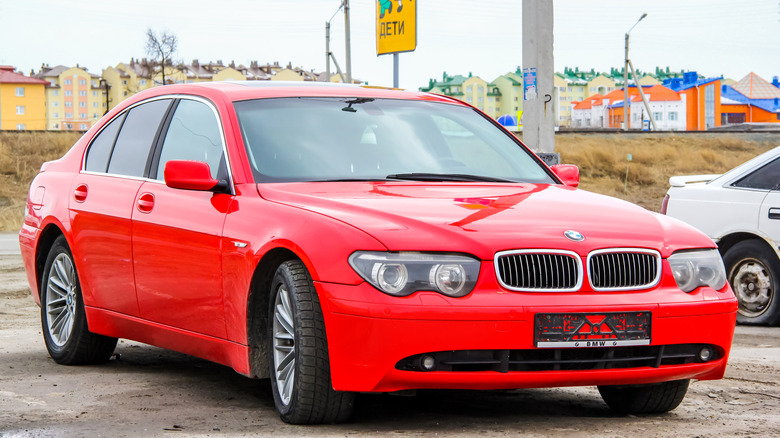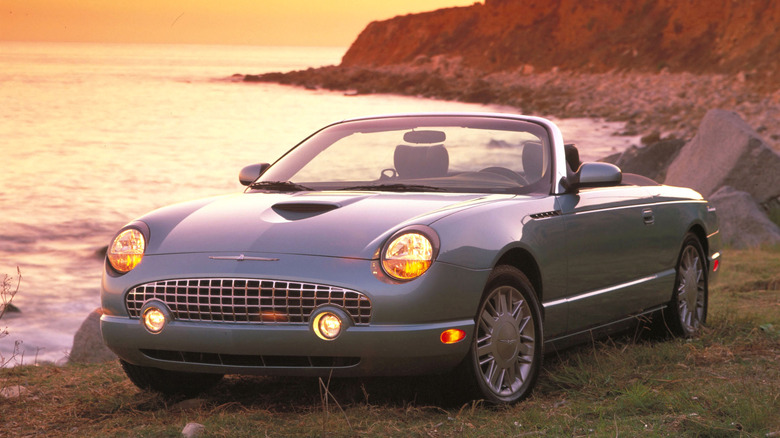8 Notoriously Bad Cars From Automakers That Knew Better
Although not as common today, 15-20 years ago it was very easy to walk into a dealership and buy a bad car. It's not strictly fair to say an unreliable car automatically equals a bad car, but dozens of factors can potentially ruin an otherwise sound automotive package. Many say that about cars built under extreme budgets or in poor industry conditions, but that's low-hanging fruit.
Even the best can sometimes mess things up, and that has happened in the automotive industry just as often as in any other industry. Automakers with otherwise stellar reputations and good track records for pumping out excellent products have also managed to knock out some truly bewildering vehicles. Sometimes it's because of a bad driving experience and sometimes it's the quality, the marketing, or simply the fact the car was sold in the wrong market — assuming there was even a right market in the first place. The cars below alienated not just brand loyalists, but also pretty much every other consumer, and the companies behind them definitely should have known better.
Lotus Europa
Everyone knows that Lotus is good at making cars that weigh about as much as a grain of rice, and can reorganize your internal organs when you attack corners at the racetrack or backroad. Even back in the 60s, Colin Chapman was putting in a lot of effort to expand Lotus' lineup to include something for everyone. In the 2000s, Lotus decided to do it again and bring back a well-known name from its iconic back catalog: Europa.
In 2006, Lotus revived the Europa name for an interesting but flawed concept: A grand touring cruiser variant of the Elise. It used the same platform but featured a GM turbo four-cylinder rather than a high-revving Toyota lump, as well as a little bit more room and some slightly nicer materials. Coupled with unique bodywork, the Europa was, on paper, fairly distinct from the Elise.
Sadly, the Europa did not catch on with basically anyone, and Lotus would quite like for everyone to forget that it existed — the car isn't even listed on the heritage page of its website. The biggest issue with the Europa was the execution of its idea: instead of being a more luxurious Elise, it wasn't luxurious enough, retaining too much of the Elise's good cornering manners for it to be considered comfortable or even daily usable for the most part.
Ford EcoSport
Automotive markets change drastically depending on where in the world you are. Not just in terms of taste and needs, but in terms of the average budget. As a result, it's often not a good idea to sell models designed for specific markets globally. This didn't stop Ford, which firmly stuck to its One Ford strategy, offering the EcoSport crossover all over the world.
The One Ford strategy gave Europeans the Edge and Mustang, while North America got the Focus and Fiesta. However, it also gave North America and Europe a taste of what markets like Brazil and India were buying from Ford. They were entirely unimpressed. The EcoSport was based on the Fiesta, but it was stylistically challenged, not least because the pre-facelift model had a giant spare tire cover on the tailgate that it definitely did not need.
Despite the Fiesta being a solid base and selling by the millions in Europe, the EcoSport had to sacrifice a lot to meet the low price it needed to appeal in its primary markets. As a result, it was noisy and unrefined, and the interior was pretty spotty. Ford eventually pulled the plug on the EcoSport in North America, and the lightyears-better Puma effectively replaced it in Europe.
Citroen C3 Pluriel
If there's one thing French automakers are good at, it's making quirky and lovable cars. For people who value comfort and standing out from the crowd, the French always have an answer. That's certainly the case with the Citroen C3 Pluriel, a two-door convertible version of the double chevron's ultra best-selling subcompact car. While it was definitely quirky, it wasn't all that lovable.
The Pluriel was based on the same platform as the regular C3, which was a great little car in its own right. A lineup of small four-cylinder engines were offered on the Pluriel, and one of them was even paired with a lethargic, lumbering semi-automatic transmission, though you could have a stick as well. The main draw of the C3 Pluriel was its roof setup. Citroen boldly claimed that the Pluriel was five different cars in one, from sunroof to full-on convertible.
While that's a great idea on paper, the execution was not ideal. The two roof pillars that arc over the side windows are both one-piece, far too big to store anywhere inside the Pluriel's small cargo area. The amount of disassembly required also left most people wondering why bother with driving around in any of the other modes in the first place. The C3 Pluriel flopped, but the Mini-rivaling DS3's canvas roof arrangement was far better executed.
Mitsubishi Mirage
No other car is a perfect demonstration of Mitsubishi's fall from grace quite like the Mirage, also known as the Space Star in foreign markets. 30 years ago, Mitsubishi was a technology and engineering frontrunner, with stuff like the Sigma luxury sedan, the GTO, a JDM car ahead of its time, and of course, the Lancer Evo. Things couldn't be more different now. For reasons lost to time and space, Mitsubishi still offers the Mirage in North America and in other global markets.
The current Mirage has been in production for over a decade, with only minor changes throughout its life. It has not been offered with a more powerful engine at any point, with the current model outputting all of 78 hp. The interior is extremely low-rent and outdated, and it's also not exactly the safest car to be in if something were to go awry.
The biggest sin of all is that the Mirage can get more expensive than its much better competition, and that's not even touching the plethora of fantastic options on the used market. The new Mitsubishi Outlander may be an unexpectedly shining offering but the Mirage has got to go. Selling its rebadged version of the Renault Clio in North America is a much better option.
Opel/Vauxhall Meriva
Throughout the 90s, and even with General Motors at the helm, Opel was kicking out some pretty fantastic cars: The RWD Omega, which almost had a V8 engine, the Senator luxury sedan, and the sporty Calibra, to name a few. Quality went down a bit during the 2000s, as Opel was focused on mass-market cars and being a lot cheaper than the competition. This was evident in many of the models it produced, the Meriva included.
The first generation Meriva arrived when Europeans were absolutely losing it over compact minivans, or mini MPVs as they were known in the U.K. Most of the benefits of a minivan, minus the third row, crammed into a hatchback form factor. Think Fiat Multipla, and you're in the right ballpark. While the Meriva offered a good amount of space, it didn't have much else going for it.
The handling wasn't the best, the interior was hopelessly outdated, and some of the lower-spec powertrains weren't up to the task of moving the Meriva along, especially when fully loaded with people and stuff. These cars could also suffer from catastrophic steering rack failure, which is not something most people want to think about while behind the wheel. Mercifully, the second-generation Meriva and its innovative rear-hinged doors improved things a lot.
Hummer H2
At this point, the story of how the Humvee became the most legendary military truck is very well known. It had the arduous task of modernizing the U.S. military's road transport, as the aging M151 jeep simply wasn't up to snuff anymore. The Humvee brought in more space, more capability, and more durability. Eventually, AM General, at the request of high-profile potential customers, decided to offer the Humvee to civilians, renaming it the Hummer.
Eventually, General Motors bought AM General, and the companies joined forces to create the H2. The H2 married the durability and rugged good looks of the Hummer H1 with a little bit more styling flair and refinement. Sadly, it didn't really succeed at the latter. Sure, the H2 was the in vehicle to have in the early 2000s, especially if you spent your work days in the studio of a hip-hop label, but most people quickly discovered that it wasn't good enough to honor its badge.
The styling, while well-intended, came off as a bit silly to some. A few of the Humvee's most recognizable traits — like the airdrop hooks on the hood and the wheel center caps resembling a CTIS — were tacked on to the H2 as mere styling features. The early models also had basically no power and some of the most dismal fuel economy in automotive history. It was half-decent off-road, though.
BMW 7 Series (E65)
BMW's older models have experienced quite a boom among car enthusiasts recently. Some people are prepared to say goodbye to a limb or two just to have an E46 M3, preferably a CSL. Frankly, this is true of any older BMW, especially the enthusiast ones. This includes the 7 Series, the flagship sedan in BMW's lineup that's been with us since 1977. Any older 7 Series could be a great used purchase — until you get to the E65.
Even the most hardcore BMW fans shudder with fear and dismay when they hear about the E65 and E66 7 Series. These cars pioneered the Bangle Butt styling trait that people either love or hate from this era of Bavarian cars. When the E65 and E66 7 Series first came out (E66 denoted the LWB version), they were truly impressive cars, giving the Mercedes S-Class something to look out for.
Packed with innovative features, including a push-button starter and the world's first production six-speed automatic transmission, the E65 was an impressive car on paper, and it was certainly a great car in practice when everything worked — you can probably see where this is going. All of those electronics and complicated features tended to fail catastrophically, making the E65 and E66 7 Series one of the most difficult old luxury cars to maintain, and most definitely one of the most expensive.
Ford Thundebird (2001)
The automotive industry celebrated the turn of the millennium by doubling down on retro styling, for better and worse. Most of the cars from this time didn't turn out all that well, especially stinkers like the Chrysler PT Cruiser and the Chevrolet SSR. Ford saw an opportunity with the retro styling boom, and brought back the Thunderbird after a relatively long hiatus. Using a platform from Jaguar of all things, the Thunderbird was a modern take on the 1955 original.
Some people loved it, some people hated it, but at least we can give Ford some credit for recreating the styling surprisingly faithfully, while also modernizing it. Sadly, the Thunderbird didn't have much to offer beyond that. The original was one of the first personal luxury cars on the market, but the final Thunderbird wasn't luxurious enough to qualify. Cheap plastic and a dull color scheme dominated the interior.
Earlier Thunderbirds also weren't exactly quick, although later versions did bump the power up a fair bit. Unfortunately, there weren't enough people enamored by the last-generation Thunderbird, leading Ford to retire it in 2005 and leave it retired forever. It's a shame, because the Thunderbird, the Fortynine concept car that previewed it, and the related Lincoln Mark X, had a lot of potential.
